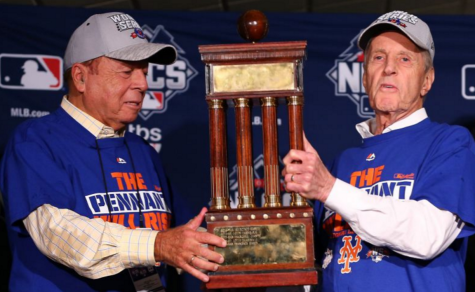
We have arrived at the last article in our series about the main issues in the negotiations for a new MLB Collective Bargaining Agreement (CBA). So far, we have covered Free Agency, Arbitration, The Competitive Balance Tax, and The Draft. This time, we will take a look at the structure of baseball’s postseason, a topic the two sides also debated in last year’s COVID-shortened season.
Among the major sports, baseball has been slow to expand its playoff structure. In 2012, MLB added one more wildcard team per league, instituting the one-game playoff for the right to advance to the division series. Ten of 30 teams qualify for baseball’s playoffs, 33% of all teams. In 2022, 14 of 32 NFL teams will be in the playoffs (43.8%), 16 of 30 NBA teams will qualify (53.3%), and 16 of 32 NHL teams (50%) will qualify.
The owners want to expand the number of teams in the postseason, and one can understand why. Estimates are that the television networks pay $1.7 billion in total each year for postseason baseball under the current contracts. The players have pushed back on postseason expansion, as they view allowing more teams in the tournament as a reason teams will not spend as much to chase fewer spots. As we have done with the other articles in this series, let’s see what Ken Rosenthal of The Athletic proposes concerning the number of playoff teams.
An increase from 10 to 14 teams, with proper incentives for teams that attain best overall records in each league, other division winners and wild-card teams with the highest win totals — pretty much the owners’ plan.
The players worry that allowing nearly half of the teams into the playoffs will result in high-revenue teams spending less aggressively. Yet, they are not entirely opposed to expanding the postseason. They made their own 12-team proposal that included two options for realigning each league, one with three divisions, one with two. No thank you to that; realignment should not occur until the league expands from 30 to 32 clubs.
Opinion
I’m not a fan of wide-scale expansion of the number of teams that qualify for the playoffs. Baseball is unique in many ways, not the least of which being its lengthy regular season of 162 games. That is double that of the NBA’s and NHL’s regular seasons and dwarfs the NFL’s 17-game regular season. After 162 games and six months, the cream has a chance to rise to the top, making a more modest playoff field logical.
However, money rules, and there is no denying that a great way to infuse more money into the game would be by expanding the postseason. More teams will draw better late-season crowds if there is more opportunity to play in October, and the networks will have to cough up more money to televise the product.
The question is, what is the right balance of expanded playoffs, versus a watered-down field with teams that should not be there? The players also have a point. If playoff expansion goes too far, some teams likely will factor that into their spending decisions, taking the approach of doing just enough to qualify for the postseason, then taking their chances once there.
Therefore, I propose the following. Expand the postseason to six teams per league, for a total of twelve. The top two teams in each league (by record) get a first-round bye. Round one of the playoffs pits team three (the division winner with the worst record) and against team six (the last wildcard), and team four (the best wildcard record) against team five. Round one is a best-of-three, with all games at the park of the higher seed. Then, the one seed plays the lowest remaining seed, the second seed plays the other remaining team in the division series, which expands to a best-of-seven. The League Championship Series and World Series proceed as usual.
This proposal takes the postseason from a maximum of 18 games per league to a maximum of 27 games per league, plus a seven-game maximum World Series. The overall impact raises the maximum number of postseason games from 43 to 61, roughly a 42% increase. If this is the case, and the television revenue went up by one-third, the dollars would grow from $1.7 billion to roughly $2.3 billion. The extra $600 million could be incentive enough for MLB and the MLBPA to align on something like this.
There is very little information coming out about the CBA negotiations. That could be a good thing. Getting the discussions out of the media, and focusing less on winning in the court of public opinion, and more on getting a deal done would be wise. We can only hope that this is, in fact, what is going on.
As Mets fans, we are looking forward to seeing an incredible top-of-the rotation, with Max Scherzer and Jacob deGrom. New arrivals Eduardo Escobar, Mark Canha, and Starling Marte add intrigue to a lineup that already features Francisco Lindor, Brandon Nimmo, and Pete Alonso.
Teams, including the Mets, have roster decisions to make. Players, such as Michael Conforto and Clayton Kershaw, need to know where they will be playing next season. Fans need their fix of trades and signings, so the hot stove chatter and be robust as we wait for spring training.
None of this is happening now during the lockout. Ken Rosenthal offered his suggestions to get things moving. MMO added additional ideas. Let’s go, MLB and MLBPA. Get back to the bargaining table and let’s get things back on track. We tried to give you a head start.















